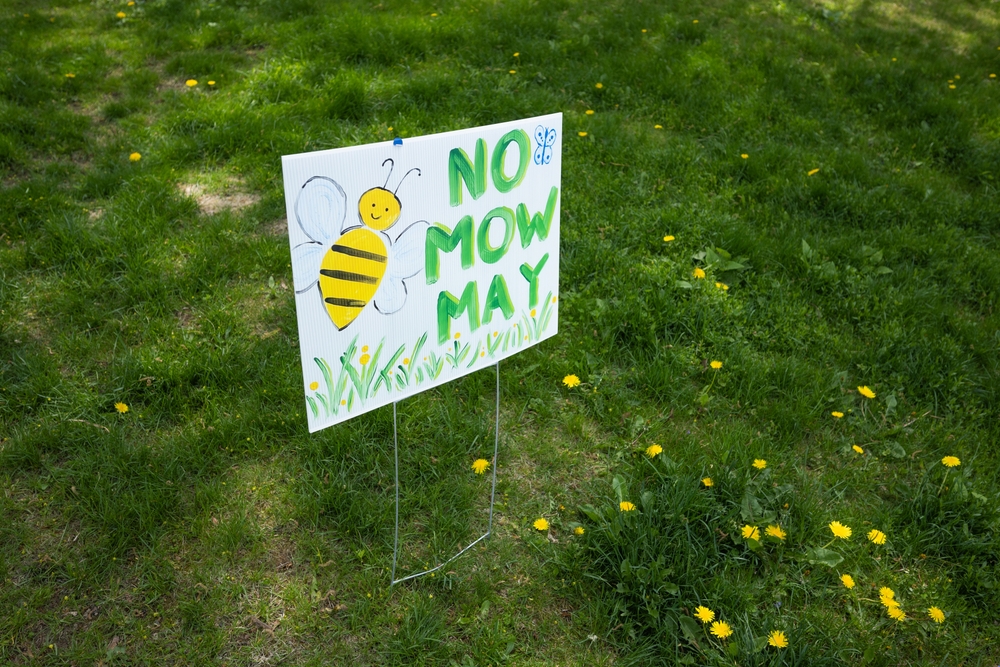After the meltdown on Wall Street, a small group of entrepreneurs is trying to make the market better, stronger and focused on the social good.
Janet Paskin | May 2009 issue

By now, doctors and developmental therapists know plenty about how to treat children with cerebral palsy. But all that knowledge doesn’t matter if there’s no one to pass it along, as is often the case in rural hospitals in South Africa. So four years ago, a team of volunteer neurodevelopmental therapists traveled to Malamulele, in northern South Africa, and set up the non-profit organization Malamulele Onward to train the hospital’s rehabilitation staff.
Since that pilot project, Malamulele Onward has sent volunteers to other rural hospitals. But as is the case for many non-profits, there’s too much need and too little money. To expand their reach—and their budget—the volunteers recently listed their project on the South African Social Investment Exchange. SASIX, as it’s called, is a stock market that connects worthy projects like Malamulele Onward with donors. In its first three years, SASIX has brought in $2.2 million for a total of 53 projects. In just two months, Malamulele Onward raised $23,000 to send 20 therapists to southern South Africa. Now its directors hope to tap SASIX to fund expansion into the Eastern Cape.
Not only in Africa, but in North and South America and Europe, “social stock exchanges” are launching to connect donors and investors with non-profits and businesses with a social mission, in the same way traditional markets present businesses and products to investors. Brazil’s Social and Environmental Stock Exchange, which is connected with the Bovespa Index, the traditional São Paolo market, has raised $5.5 million for dozens of civic groups since 2003. On the profit-making end of the spectrum, a pair of London-based entrepreneurs has received a Rockefeller Foundation grant of $360,000 to help start a stock market for “social-purpose” businesses and like-minded investors. Other efforts are underway in India, New Zealand, Portugal and Thailand.
What these efforts share is a commitment to the language and practice of the business sector, a growing trend in the world of social change. “This is a cultural phenomenon,” says Daniel Crisafulli, director of ecosystem investments and partnerships at the Skoll Foundation, a California-based philanthropic organization dedicated to social entrepreneurship. “You have a lot of people coming from business school, or the business sector, and they want to take their knowledge and the language they’re comfortable with and bring it into the social sector.” In the social stock market, companies that incorporate social or environmental missions into their bottom lines meet investors and donors interested in enterprises and non-profits that satisfy business standards.
The language and practices of the business world would take these exchanges into new territory. The best-known social stock exchanges, in Brazil and South Africa, have appropriated the language of markets to facilitate philanthropy—“investing” is the code for “giving.” In the U.S. and U.K., the exchanges are strictly for commercial businesses, with the same financial risks and rewards that shares of any company might offer. But the hope is that creating a separate exchange will attract investors who believe in social missions as much as profit potential.
Neither approach is without its critics. Labeling a philanthropy clearinghouse a “stock exchange” seems more gimmicky than anything else, says Michael Edwards, a scholar at Demos, a non-partisan think tank based in New York and author of Just Another Emperor?, a book about what he calls “philanthrocapitalism.” Worse, it may import the values and conflicts of the for-profit sector. “In the future, will there be anyone left who responds to something other than a market incentive?” he asks. “Where will that leave us?” As for the for-profit equity models, none have been launched yet, though several are projected to be up and running within a year. No one knows if they’ll function. If the economic environment doesn’t improve, the odds of success get smaller.
SASIX adopts more than the moniker of a stock market. The point is to make business-minded investors take civic projects seriously, says co-founder Carol Tappenden. That means making sure projects are transparent, with measurable social outcomes. To list a project on SASIX, an organization has to submit a written proposal and pass a series of committee vettings. The final stage of approval is a two-day site visit by SASIX staffers, who verify the written proposal, interview board members and talk to potential beneficiaries. “Non-profits are really being held accountable,” Tappenden says. “A lot of them haven’t ever had to do a risk analysis of their organization.”
The results are impressive. Interested “investors” see a full profile of the undertaking, an itemized budget and SASIX’s evaluation of the project’s risks and the organization’s strengths and weaknesses. Everything that can be measured is measured, including a project’s impact on beneficiaries’ quality of life. “Donors want to know, ‘What real impact is my money having?’” Tappenden says.
But critics like Edwards worry about the effects of imposing market metrics on social activism. The non-profit sector has traditionally functioned differently than the for-profit world, he says, valuing solidarity over market share, democratic accountability over market accountability. Put social projects in head-to-head competition for funding, and those values start to erode. Also, he notes, the most difficult problems are always the most expensive to solve, which makes challenging projects less attractive if they’re judged by their “bang-for-the-buck” efficiency. “I worry that we’re eroding some critically important traditions in a way that’s potentially very dangerous,” he says.
Not fair, says Tappenden. Quantifying a project’s impact does more than appeal to the hearts—and wallets—of business-minded donors, she says. “This has raised the bar for everyone.” It also adds legitimacy to a sector that’s been considered loosey-goosey for years. And an exchange like SASIX acts as a brokerage, imposing some structure and order on the largely disorganized world of charitable giving. Moreover, it’s working: Money is going to the projects, and SASIX is considering launching a microfinance platform.
The laws of markets and capitalism already govern the for-profit sector. And for so-called “social enterprises,” that poses a huge problem. When a traditional business reaches critical mass and needs money to grow, it can court investors and, eventually, go public—sell shares of the company in the marketplace. As the company makes more money, the value of its shares rises; everybody’s happy. But for a business that counts making money as only one of its goals, it’s frightening to invite investors focused only on maximizing returns to the table. Most social entrepreneurs stay away from the capital markets because they fear mission drift, says Pradeep Jethi, a veteran of the London Stock Exchange. “They fear shareholders could twist the model.”
That’s why a number of entrepreneurs, Jethi included, see a need for alternative stock exchanges, tailored for social businesses and like-minded investors. In a survey of social-purpose businesses in the U.K., Jethi found that roughly half were planning to raise capital in the next 12 to 18 months, some of them to the tune of $7 million or more. And almost 20 percent said that if a social stock exchange existed, they’d want to list their companies, a number Jethi found surprisingly high given the historical skepticism of the markets among social entrepreneurs.
Of course, for cash-starved businesses, it’s easy to see the attraction in an alternative source of capital. But investors also like the idea of an exchange. In Jethi’s survey, more than 10 percent of pension fund and socially responsible investors said they liked the idea of a social stock exchange; another 15 percent said they’d move between 1 and 3 percent of their assets, many within a year.
Maybe soon they’ll get their chance. Jethi and Mark Campanale, a founder of the U.K. Social Investment Forum, are trying to launch exactly that exchange—a fully regulated public stock exchange, specifically for social-purpose businesses. And this fall in the U.S., Michael Van Patten plans to launch Mission Markets, a private, unregulated exchange designed to connect social-purpose businesses and accredited investors (by law, only certain investors can participate in unregulated markets). Within two years, Van Patten says, he expects his exchange will process 40 to 50 transactions a month, to the tune of $250 million a year.
Neither exchange has launched yet, and nothing like this has been tried before. Even in better times, these new exchanges would likely suffer the problems of all small markets: not enough buyers or sellers of any given stock at any given time. If there aren’t enough buyers to make it worthwhile, the firms will be forced to go elsewhere for capital. Similarly, if there’s not enough trading, investors may be stuck with shares they don’t want but can’t sell.
And certainly the ongoing financial disaster will have an effect, though it’s hard to say what that will be. Investors are obviously skittish, and small, new companies suffer in recessionary times. But Andrew Kassoy, a co-founder of B Corporation, a network of social enterprises, says the credit crisis may actually be an opportunity. “The markets focus on the short term, and now everyone realizes that’s not always good for the long term,” he says. “Investors are hungry for something new.”
Jethi agrees. A self-identified capitalist, he nonetheless believes the time is right for what he calls “compassionate capitalism,” a dramatic departure from how business is being done. “This is a time when we may want to forsake the profit-maximizing firm for something that makes satisfactory profits and contributes to social welfare or social justice,” he says. And at the center of it all—a social stock exchange.
Janet Paskin, who keeps her savings in an old sock, wrote about sustainable economics in the December 2008 issue.
Markets with a mission











